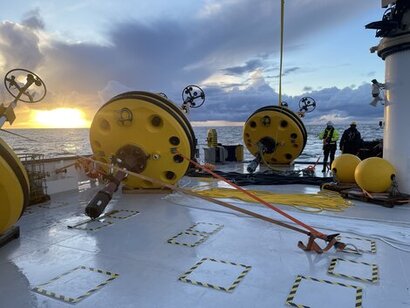
The survey, conducted by Fugro, will run for 12 months and produce insights which will inform the project's design, operations, and maintenance strategy, as well as support the planning application process.
Two floating SEAWATCH Wind Lidar Buoys and a Wavescan buoy have been deployed to gather essential meteorological, oceanographic, and environmental site data. These include wave height, wind and current speed and other region-specific metrics, enabling a comprehensive assessment of the site's characteristics and seasonal conditions.
The metocean survey forms part of a series of surveys to be conducted by Salamander before starting the Environmental Impact Assessment (EIA) and Habitat Regulations Appraisal (HRA). The project team aims to submit the necessary consent applications by early 2024.
“This is a key step in the development of our pioneering project” said Hugh Yendole, Project Development Director at Salamander. “As a stepping-stone development, Salamander will use innovative floating offshore wind technologies to help Scotland and the UK progress towards a net-zero future. This survey is crucial in determining the most appropriate course of action moving forward. We are pleased to have Fugro on board for the delivery of the survey, to aid our understanding of the environmental factors that will influence the selection of any design or operational features of the farm.”
Salamander will be located 35 kilometres off the coast of Peterhead, Scotland, and will generate enough green energy to power 100,000 Scottish homes. It will also provide insight and best practices to future commercial scale developments in Scottish waters, ahead of the larger-scale ScotWind buildout.
For additional information:

